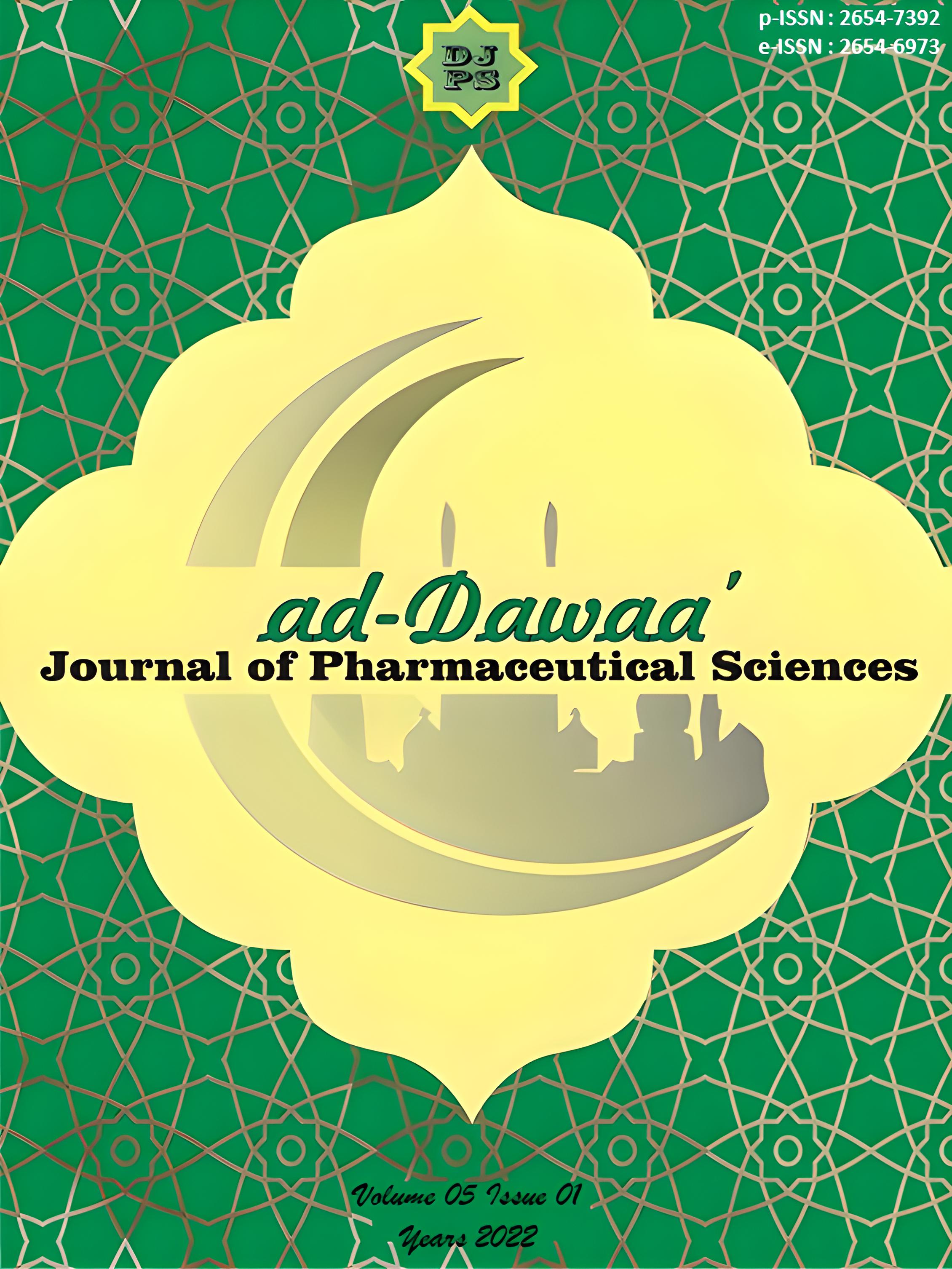The Comparison of Total Phenolic In The Extract of Wali Fruit (Brucea javanica L. Merr) With Maceration and Sonication Extraction Methodes
Abstract
Wali Fruit Seed (Brucea javanica L. Merr) is one of the traditional medicines in Indonesia that has acted as an antidiabetic, antioxidant, and anti-inflammatory. Phenolic compounds play a role in acting as a drug. The amount of phenolic can be influenced by the extraction method used. The purpose of this study was to compare the total phenolic content of wali fruit seed extract with maceration and sonication extraction methods. The advantage of maceration was the simplest and most economical method, while sonication had a short extraction time. The method of this research is the extraction process by maceration and sonication. Screening of phenolic compounds with FeCl3 reagent and determination of total phenolics by the Folin-Ciocalteau method. The results obtained were the total phenolic value with the maceration method was 61,1927±0,1560 mg GAE/g extract, while the total phenolic value with the sonication method was 67,9854±0,0968 mg GAE/g extract. This value was significantly different (p<0.05) statistically. Thus, it was found that the total phenolic by the sonication method was greater than the maceration method.
KEYWORDS: wali seeds, maceration, sonication, phenolic
Downloads
Once an article was published in the journal, the author(s) are:
- granted to the journal right licensed under Creative Commons License Attribution that allows others to share the work with an acknowledgement of the work's authorship.
- permitted to publish their work online in third parties as it can lead to wider dissemination of the work.
- continue to be the copyright owner and allow the journal to publish the article with the CC BY-SA license
- receiving a DOI (Digital Object Identifier) of the work.


1.png)